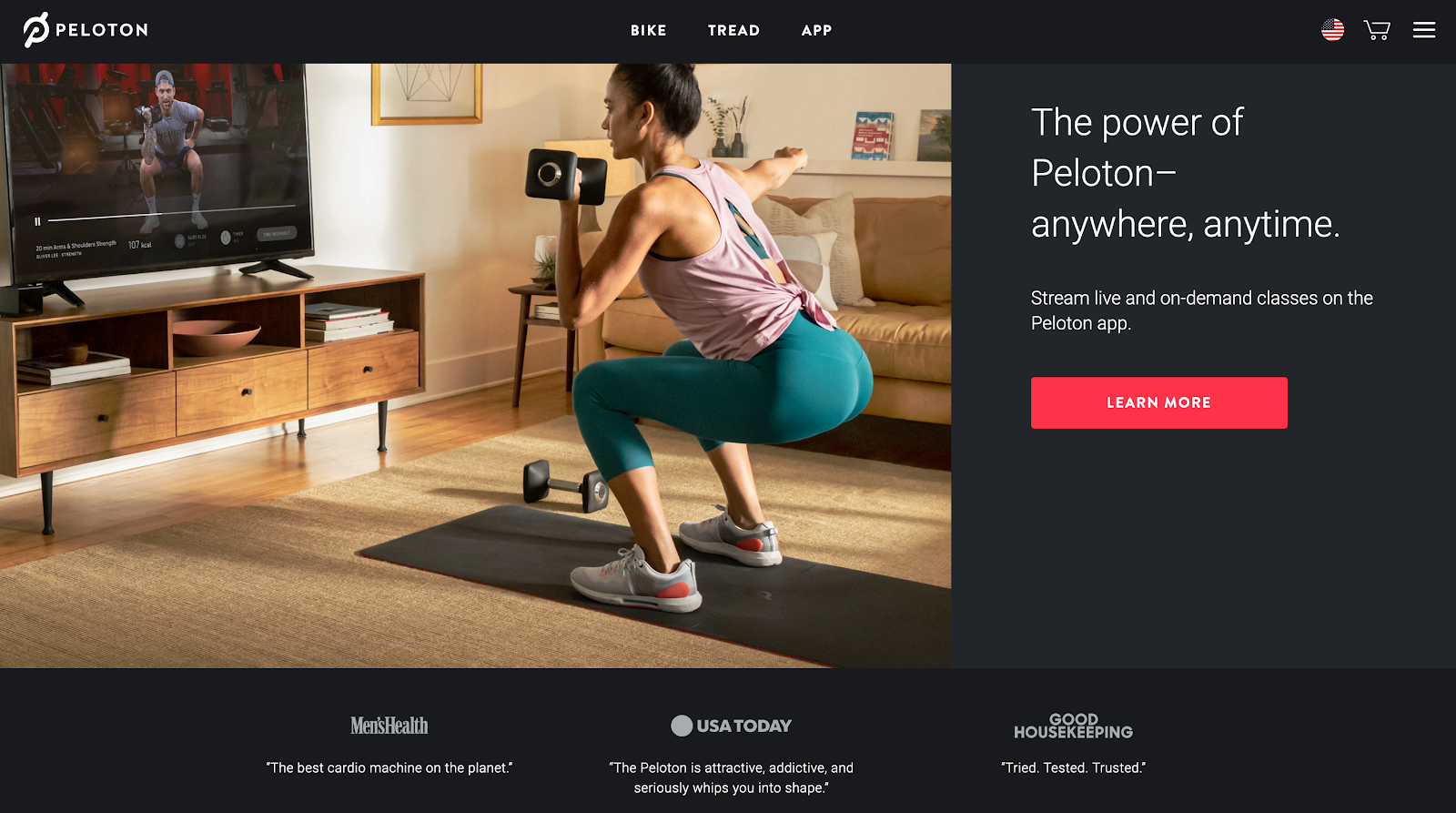Your positioning statement might be some of the most powerful sentences you ever write.
A bold claim, right?
Well… Your positioning statement will dictate how your business approaches sales, growth, marketing, and even how you build the product(s) or service(s) you offer customers.
Whenever a customer interacts with your brand — whether it’s on your homepage, an advertisement, a social media post, or an email — the experience will reflect your brand and what you include in your positioning statement.
Your positioning statement is how you ensure every touchpoint and interaction is a positive one that reinforces how you want your business to be perceived.
So where should you start?
In this guide, we’ll share everything you need to write a compelling positioning statement.
What Is A Positioning Statement
Here at Sumo, we focus a lot on how you can grow your email list and generate leads. But to do those things successfully, you really need to understand your business and exactly what you offer customers.
This is where a positioning statement comes into play.
A positioning statement aims to succinctly describe what your business does, your target customers, and how you can fulfill the needs of your target customers. Positioning statements will often focus on what makes your business unique in the market too.
Unlike a company tagline, a positioning statement tends to be used internally to guide decision making and ensure the whole team is on the same page.
What To Include In Your Positioning Statement
Every positioning statement — no matter its structure — will contain three elements:
Your target customers
The needs of those customers
How you fulfill those customer needs
Here’s a breakdown of each element…
TARGET CUSTOMERS
Who are your ideal customers? Here is how a few companies could answer this question.
Peloton might identify its customers as “health-conscious millennials who earn over $100,000 a year.”
Taco Bell might focus on saying it serves “individuals seeking quick service who love adventurous food.”
Sumo could target “online business owners who want to be smarter with their time.”
When thinking about target customers, try to get as granular as possible and examine subsets of your potential market. For example, look at the above examples again, and you’ll notice I’ve tried to add specific details to each group.
Rather than just saying your target customers are “small business owners,” try to think about what industries your most successful customers tend to be in and why they choose your business.
To do this, you could dig into your data and see what your most successful (or highest-grossing) customers have in common. Or you could jump on calls to see how they describe their businesses and the industries they work in.
This might seem like a small change, but switching focus from “small business owners” to “hyper-organized small business owners” or “small business owners with email lists larger than 10,000” means you can craft more specific and effective copy, landing pages, and ads.
CUSTOMER NEEDS
So you've thought about your target customers. Now it’s time to examine their pain points. To do this, you need to answer this question:
What is it that makes target customers need your product or service?
Let’s use Peloton, for example. The target customer we identified earlier was “health-conscious millennials who earn over $100,000 a year.”
But before they make a purchase, each Peloton customer will have likely experienced a specific pain that made them realize they needed to buy Peloton’s product.
For example:
Paying for a gym membership but never finding time to go.
Realizing their favorite sports jersey is a little tighter than it used to be.
Feeling out of breath when playing with their kids.
All of these problems point toward Peloton’s target customers wanting (or needing) to exercise more but not having time to do so. Its home exercise bike solves this by enabling its customers to ride whenever it is convenient for them without leaving home.
So the pain point could be summed up as: “Finding time to exercise.”
There’s no silver bullet to figuring out your customers' pain points. And as I mentioned above, one way to approach this challenge is to speak to customers directly.
Try to organize calls with 5-10 of your best customers and ask:
What problems were they experiencing before they found your product or service?
What made them sign up or buy?
How is their life easier now?
Answers to these questions will help you to uncover the pain points your business fixes for target customers.
PROOF YOU CAN FULFILL CUSTOMER NEEDS
Saying your product fulfills a customer's need is one thing… but proving it is 10x more powerful.
Here’s an example. Which product would you be more likely to buy:
Product A — We can help your grow your email list
Product B — The email growth tool used by over 400,000 marketers
I’m guessing you’re leaning toward Product B, right?
That message feels more compelling because it offers proof that it can fulfill customer needs. It’s not an empty promise like Product A. It uses social proof (400,000 of your peers can’t be wrong, eh?) to create trust and prove it can help you.
Instead of just saying your product or service can fulfill customer needs in your positioning statement, think about how you can prove it.
This mentality will also help you to craft messages across your website and marketing that back up what you say in your positioning statement. For example, check out this section of Peloton’s website:
In just this section:
You can see someone exercising at home
The copy says you can use it “anywhere, anytime”
It uses social proof from well-known publishers to back up its points
When building trust with your target customers, try to show them you can fulfill their needs rather than simply telling them.
How To Write A Positioning Statement (+ Templates)
So we have the three key components of a positioning statement laid out — target customers, customer needs, and proof you can fulfill those needs. Now it’s time to turn those points into a cohesive and concise positioning statement.
Starting from nothing can be tough. To give you a helping hand, here are two positioning statement templates you can experiment with: One that we’ve crafted at Sumo, and one from author and management consultant Geoffrey Moore.
THE SUMO POSITIONING TEMPLATE
[Company name] is a [company type] for [target customer] who [target customer needs]. We [proof you can fulfill customer needs] and [key differentiator when compared to competitors].
Example:
Sumo is a software company serving online business owners who want to scale their email lists effectively. We serve over 850,000 websites and our product can be set up in under a minute without the need to code.
THE GEOFFREY MOORE POSITIONING STATEMENT TEMPLATE
This template is from Geoffrey Moore’s book Crossing the Chasm:[*]
For [target customer] who [statement of the need or opportunity], the [product name] is a [product category] that [key benefit, compelling reason to buy]. Unlike [primary competitive alternative], our product [statement of primary differentiation].
Example:
Designed for website owners who want to grow their email lists, Sumo is an email capture plugin to help businesses grow their lists on autopilot. Unlike other tools, our product can be installed in under one minute without needing to code.
How To Review And Foolproof Your Positioning Statement
Chances are, you won’t nail your positioning statement the first time around.
And even if you think it’s perfect after one or two attempts, you really need to scrutinize it before deciding it's finalized.
Your positioning statement will drive almost everything you do at your company — from the copy you write to the product(s) you build or service(s) you offer — so it’s worth spending a bit of time on it upfront.
Here are two ways you can ensure your positioning statement will set you up for success:
1. ASK TOUGH QUESTIONS
When reviewing a positioning statement, it’s easy to focus on questions like “does it read well?” or “do I like how it sounds?” But this isn’t a public-facing message. Worry more about what it says and the expectations it sets for your business than how well it reads.
Before you agree on your positioning statement and move forward, ask yourself::
Does it communicate how your business is different from the competition?
Is it clear what problem your business solves for consumers?
Is it unique? (If you could substitute your business name for a competitor’s without making any other changes, you need to start again.)
Does it leave open opportunities for your business to grow?
Is it clear who your target customers are and how you meet their needs?
If you feel satisfied that your positioning statement answers these questions, it’s time to start gathering feedback from across your team…
2. GET FEEDBACK FROM ALL AREAS OF YOUR BUSINESS
It might fall on your marketing team to write your positioning statement, but it will affect every department.
If you want to create a statement that unifies the business and gets everyone pulling in the same direction, it’s important to ensure people from all areas of your business review your positioning statement before it’s finalized.
No matter your business size, try to ensure every department has input. If you’re a large business, share your draft with team leads across tech, sales, customer service, etc. For smaller companies, try to let everyone be involved and feel heard by giving them the opportunity to share feedback.
Start Writing Your Positioning Statement NOW
Writing a positioning statement should be a key part of your business strategy. The couple of sentences that make up the statement have the power to shape your business and everything you do moving forward.
To write a killer positioning statement, use one of the templates we shared above, and remember to think about:
Your target customers.
Your target customers' needs.
How your business fulfills target customer needs.
So what’s your positioning statement? Start writing it now to set your business up for long-term growth and success.



Comments